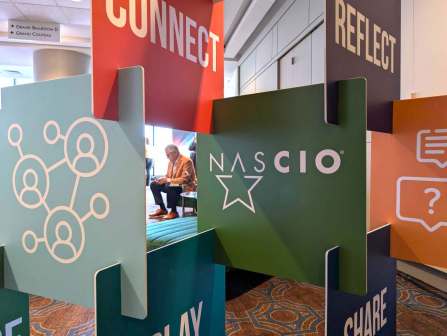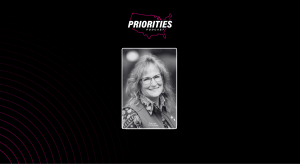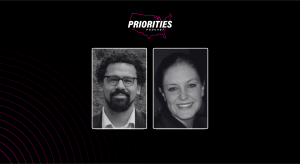Accessibility emerges alongside AI as priority for state tech leaders at NASCIO annual conference

While buzz about artificial intelligence continues to at hum at the National Association of State Chief Information Officers annual conference in Denver this week, another topic dominating the conversations among state tech leaders is compliance with accessibility standards.
Results of its its annual membership survey were revealed during the event, with accessibility bursting onto the scene. Last year, accessibility barely cracked NASCIO’s top 10 priorities list, coming in tenth place. The sense of urgency stems from the Justice Department’s impending April 2026 deadline for states to ensure their websites are accessible, but a lot of states’ websites and web applications aren’t currently compliant. Another NASCIO report issued earlier this year warned that the states that fail to update their websites and other digital platforms ahead of the deadline could risk costly lawsuits and reputational damage.
State and local governments with populations of 50,000 people or greater have until April 24, 2026 to ensure their websites, apps and other digital platforms meet current web accessibility guidelines, and smaller state and local governments have an additional year. However, NASCIO’s 2025 member survey results found disparate efforts across the states. While two-thirds of states have hired a technology accessibility coordinator, only 46% have have the funding for accessibility improvements. Even more concerning is that only one state reported that it had fully implemented its accessibility plan.
Shawnzia Thomas, Georgia’s chief information officer, said during a panel with other CIOs Monday that while her state is on track to meet the deadline, the state’s mobile applications will require additional work. Georgia is one of the many states that does not have a dedicated technology accessibility coordinator.
In Maryland, which has a dedicated accessibility lead in Marcy Jacobs, the state’s chief digital experience officer, accessibility has been a top priority to CIO Katie Savage, said Eric Bathras, the chief technology officer over infrastructure. Though, Bathras said, accessibility is not directly in his wheelhouse, he’s been thinking about how best to support Jacobs’ efforts, which means ensuring residents and community anchor institutions even have the broadband connections necessary to engage with accessible websites.
“What I’m looking at from an accessibility perspective is I want to be in a position where we have high bandwidth and capacity to serve these [community anchor institutions], so when the citizens need that support for benefits and applications for those benefits, that from a cloud data center infrastructure, we have the right infrastructure and the horsepower to be able to process those benefits,” Bathras said in an interview. “There’s no slowdown on the backend from a network standpoint, and that’s where I’m working closely with the secretary. Collaboration is key.”
During a panel session on Tuesday, Marie Cohan, the statewide digital accessibility coordinator of Texas, and John Estill, Michigan’s digital information accessibility coordinator, urged attendees to consider building accessibility programs. Both pointed out that implementing digital accessibility programs can lead to cost savings, improved government efficiency and better user experience.
Cohan shared statistics she gathered regarding each of the 50 states’ accessibility efforts and what mandates — such as legislation, standards, initiatives or statements — were governing those efforts. She said 88% of the states have already formalized their governance around accessibility, but that there are some common digital assets, such as PDFs, third-party widgets or web overlays that are difficult and expensive to make accessible. They basically act as “band aids on a wound,” Cohan said.
“If you build a house and you’re forcing some of your people to come into your house through the window, they can’t use the front door, and they’re not all going to fit. We want everybody to be able to come through that front door equally,” she said.
Accessibility wasn’t just a conversation topic among conference goers — it was also top of mind for NASCIO itself. For the first time at one of its annual conferences, NASCIO offered live closed captioning via its mobile app and on screens alongside main stages through communication access realtime translation services. To provide the CART service, NASCIO hired a company that offers its stenographers to join the conference virtually via Zoom.
When asked why the organization opted to provide the services through a live, virtual stenographer and not through an AI service, Emily Lane, NASCIO’s director of experience and engagement, said relying on AI might have not produced as accurate of results — especially with all the technology jargon thrown around.
“NASCIO is a tricky acronym, and we have a lot of acronyms in this technology world, and that feels like sometimes the AI isn’t a great option,” Lane said. “We provide the company that is doing this with a list of common words and acronyms so they can listen for that, and the outputs a little more spot on than perhaps AI at this point.”
Cohan, the Texas digital accessibility coordinator, said the goal is for residents to be able to interact with government services.
“That’s the end goal, but for what John [Estill] and I do,” Cohan said, “for what people like us do at the statewide level, our focus is on technology and what can we do to make the state as a whole, all the agencies, higher-ed, whatever falls into that group, what can we do to ensure the technology is working for our residents well.”






